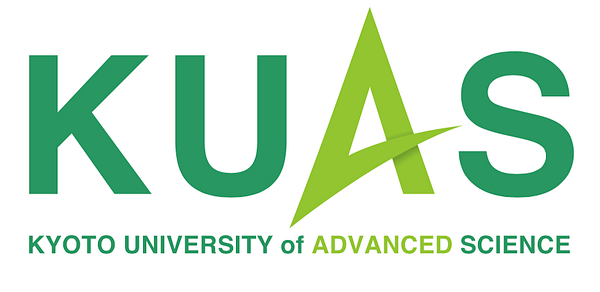Press release -
[Professor Spotlight] An eye for the bigger picture - the kind of engineers KUAS wants to bring up (Osamu Tabata, Dean of KUAS’ Engineering Department)
“To raise the engineers of the future, we need to foster a practical, solution-oriented mindset together with playful creativity.” This is what Dr. Osamu Tabata, Dean of the Kyoto University of Advanced Science’s (KUAS) Engineering Department, wants to create at the school. He knows how important engineers are to our future society: “engineering is connected to everything from the factory to mobility, health-care to agriculture, even including communications.” Listening to the professor speak will make a futurist out of most of us. Indeed, the applications of modern engineering are vast. Dr. Tabata mentions just one example, the rapidly changing field of robotics. “Robots are becoming multi-dimensional, detecting their surroundings similar to the human senses while analyzing the detected information using AI, for instance. This can lead to applications replacing humans, such as on the manufacturing floor or in nursing, as well as in tough environments like deep-sea exploration or even outer space.” As dean, Dr. Tabata is not only interested in what the future holds. He wants to play an active role in educating those who will realize this future - the engineers that will contribute to making this technology a reality.
The connection between theory and practice
Coming from a background of sensors, Dr. Tabata has a keen eye for how things fit into place: “Sensors fulfill one main function: gathering of information via detection. However, with the rise of IoT, the importance of sensors in the greater process has become pronounced. From detection via sensors, to transmission via wireless communications, to analysis via computers, being able to understand the entire process is in demand. We want to bring up students with this sort of comprehensive mindset.” Designing the curriculum, Dr. Tabata ensured that there is a focus on connecting and applying knowledge acquired in the various classes. That is why practical coursework is a mainstay from the first year on. “We want to build a base of knowledge that allows our students to connect theory and practice.”
Students will be able to choose courses based on their interest, including a hardware-focused course where students build a simple inverted pendulum robot, or a course focusing on software where students create an application that utilizes captured information, e.g. from a sensor, to give feedback to the user. “Not only do we want to make students find their passion, we want to create an environment where students become naturally curious and start to think independently. For instance, if you have a certain part performing a key function of a robot, we want our students to naturally wonder what goes into creating that part.”

Capping off the studies uniquely
This thread of developing both fundamental knowledge and the mindset to creatively apply that knowledge is present throughout the curriculum, and is encapsulated by the innovative capstone program. “Capstone refers to the top of Egyptian pyramids. Expanding this metaphor to our curriculum, the lower bricks is fundamental knowledge: physics, mathematics and information processing. This is expanded by practical courses and then literally capped off by the real-world application of everything our students have learned.” Therefore, in lieu of a final research project, KUAS’ students will be assigned to team and given a task by a company in the field. This is designed to let students experience and understand real-world issues. “At first, students might think that they lack the knowledge to tackle the task given to them by the companies, but through teamwork, creativity and some support from the teaching staff, we hope they can come up with a solution”, says Dr. Tabata, who got inspired by similar programs in the US and found the idea to fit seamlessly with his overall vision for the program. “We hope the capstone program will allow students to develop new skills; hard skills applicable during the project as well as soft skills such as teamwork and leadership. This should allow them to develop their interests, leading to our students visualizing their career path earlier and clearer than at most university programs.”
A diverse environment leading to diversity of the mind
The fact that the entire curriculum is in English further establishes the vision of KUAS and Dr. Tabata to raise engineers ready to contribute immediately post-graduation, both within Japan and internationally. One key to realizing this is a truly diverse environment on campus, and Dr. Tabata has his sights held high: “My goal for our student body is 50-50-50: 50% international students, 50% female students, and a 50% rate of continuing into postgraduate studies.” These would be unprecedented numbers in Japan, and Dr. Tabata hopes that inserting a high percentage of international students as part of an English-based program that does not separate Japanese and foreign students will be another key to success. “There will be so many stimuli on campus: a diverse faculty and student body, a focus on practicality with chances to nurture independent thought in addition to teamwork-heavy projects, as well as the unique environment that is Kyoto - both as a technological cluster and cultural capital.”
Topics
- Education
Categories
- study abroad
- university
- mechatronics
- education
- engineering
- faculty
- kyoto
- kuas
- nidec
The Kyoto University of Advanced Science’s (KUAS) all-new, innovative English-taught engineering department is currently in the planning phase for its launch in 2020. The school itself has a 50-year history since its establishment, and is an accredited private institution located in the heart of Japan. By inviting the top-notch CEO of a Kyoto-based globally successful firm as chairman, the university aims to offer its academic resources in the international arena, with the exciting new engineering department being one example of these efforts.
